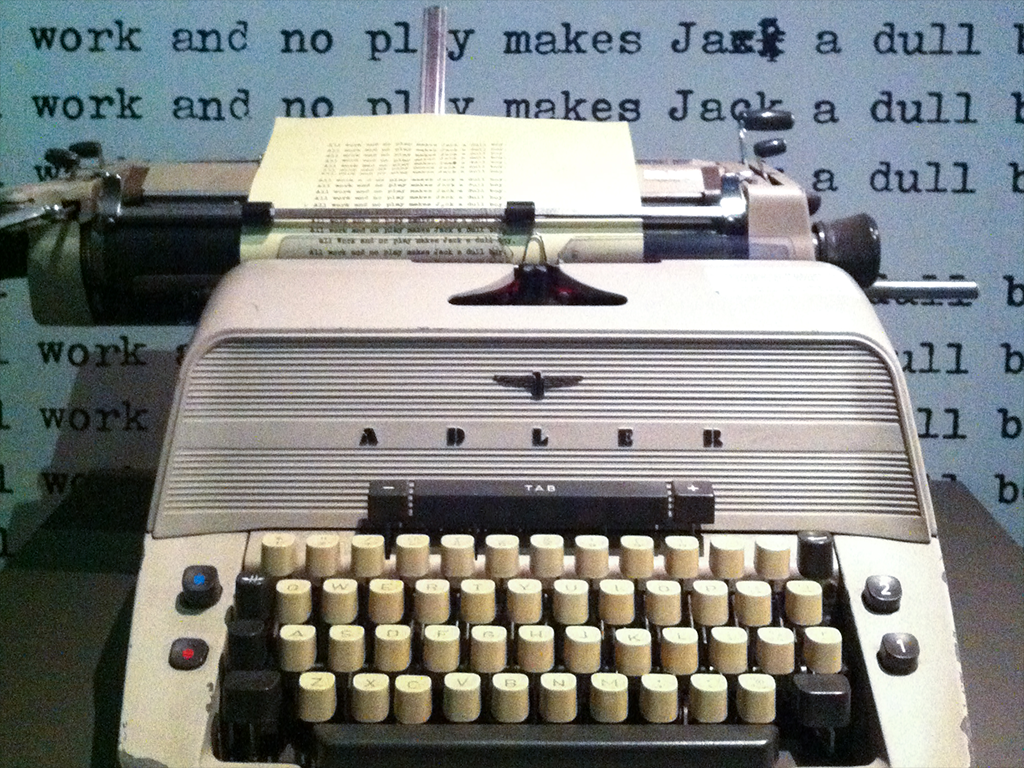(This is a GUEST POST, to help this site get found by search engines. It’s not by me, and the advice in it is NOT CORRECT. But it’s here to help, so let’s just give it a wink and a pass, shall we?)
Rules are made to be broken, and this is especially the case when it comes to screenwriting for movies. Otherwise, we would always watch the same movies. You still need to know these rules before you break them, however. The problem for many writers is that they assume that they hold a ready script simply because they have an idea that they are picturing in their minds. The passage from the idea to the screen goes through a thousand rules, the least of which is the formatting.
Would you like to learn more about and initiate yourself into screenwriting techniques? In my opinion, there is little alternative to taking specialized screenwriting courses. Because screenwriting can be learned. Writing for screens is linked to many parameters due to its support and exploitation. You need to know a complete set of standards and guidelines before you get into the adventure of scriptwriting. It’s precisely at this stage that my help may be useful to you.
Are you as passionate about screen writing as you are enthusiastic for cinema? Look no further. You’ve just stumbled upon a unique screenwriting and scripts course that will lead you to the realization of your goals and help you reach your full potential as a top-notch screenwriter.
Screenwriting Classes
Don’t waste your time filling in screenwriting pages before your story is fully structured. It’s easier to find the thread of a structure than that of a narrative. Once the structure is solid and precise enough, you will have no trouble writing your script. Even after long periods of time without writing, you will easily find your way back to your narrative.
I am here to accompany you in your cinematic immersion and–more precisely–in your screenwriting journey. Whether you are a beginner screen writer or not, I am committed to refining your approach to this beautiful craft and to solidifying your foundation in screenwriting.
Discover the world of modern dramaturgy
There are two kinds of points of view when it comes to screenwriting:
- The screenwriting point of view
- The dramatic point of view
The first represents the main thread of your story. The second represents the angle of vision and the interpretation of the story. Does the viewer follow a single hero to experience his or her dramas from a single angle? Or does a second character offer another view of things? In other words, is there or is there not an antithesis to answer the thesis?
Whether it’s a novel, a short story, a play, a screenplay or any other form of narration, dramaturgy is the science that allows an author to convey their ideas through characters and events.
The fundamental difference between writing for the stage and screenwriting is a matter of rhythm. There are many different issues at stake. Thus, secondary plots will be more present in cinema than in theater. The cinematographic aspect of the screenplay should not be forgotten. You work for the image.
Screenplay and screen writing consulting and classes that work
By its nature, cinema opens the door to certain genres such as adventure and movement. Cinema also welcomes stories that make us discover a different, more magical world. It also offers stories that bring man and his urban or natural environment into contact.
Cinema willingly magnifies the solitary hero, the cowboy vigilante or the lost outcast. It does so maybe even more than the theater or the novel. Cinema also favors mystery and suspense as these are both intriguing topics. Always related to the idea of limited time, much more sensitive to the cinema than to a stage. A very large number of films have been based on the idea of a race against time.
For a dialogue to work, the first thing to ask yourself is what the characters should say. Then you have to think about how these characters are going to say it. Remember that each character has his or her own linguistic palette that is shaped by their education and culture. Last but not least, don’t forget that the linguistic style used also depends on the situation and the interlocutor.

What is most important when script writing?
The most important thing in a movie scenario? That’s a broad question. But once you have an acceptable screenwriting idea, it’s how you treat the idea that truly counts. There is no secret other than to check beforehand that your idea is good enough to allow it. The idea must immediately identify a multitude of possible leads from its mere statement.
Afterwards, your screenwriting job is to flesh out and enrich the narrated issues and obstacles. Do everything in your power to ensure that the outcome does not become clear after half an hour. The rest is above all a matter of imagination as a screen writer. However, be careful not to get lost in overly detailed descriptions. A scenario must be clear and easy to read. Describe only what is essential for a good understanding of the story.
Is it possible to screenwrite only on the basis of your imagination?
It’s absolutely useless to pick up your pen to write scripts without knowing exactly:
- Where you are going with your characters
- What your plot is about
- What is happening in a concrete and chronological way
In fact, a structured work is a core feature of creation. It only happens when you have your story integrally in your hands. There are several reasons for this, but the most important is credibility. It’s unthinkable to manage a structure made of multiple plots and characters without knowing exactly where you are going.
Is it absolutely necessary to find an innovative idea?
We all agree that a screenplay–aka a movie–must be innovative and bring something new to the table. However, the basic idea will always draw from the source and not from the original.
Everything had already been dealt with long before cinema existed and far before dramaturgy even existed. This is for the simple reason that you will always deal with the human and its springs. Even if you talk about an alien, that alien will have qualities, flaws, and goals that are similar to humans.
It’s in this sense that the founding idea will never be completely new. You will invariably talk about these things in your scripts:
- Love or hate
- War or peace
- Survival or revenge
Remember that a screen writer idea always comes down to a conflicting goal. And that goal, undeniably, will be related to us humans. It has been so ever since man has been making up stories.
On the other hand, the treatment of the idea will have to be unique. Yet before we get there and begin this stage of the work, it’s essential to set the guiding idea of the scripts and screenplay once and for all.
How do you know when a script is officially ready?
A script is truly finished when the film has been edited. However, for the screenwriter, the key is to trust yourself and decide that the last draft is the right one. Infinite proofreading is useless. In many cases, after reading the script over and over again, you may end up feeling a certain weariness when viewing your work.
When that happens, any new idea seems more interesting than those already on paper. However, this is often a red herring. The more you reread, the more you lose all perspective and end up becoming the worst reader when it comes to judging your work. So, read as much as you want, write as much as you think it’s useful, but be careful not to fall into eternal and sterile dissatisfaction.
How should a main character be presented?
At this level, there is really only one fundamental rule. Your main character must be presented according to the plot and not out of context. Each element must serve the rest of the scenario, so to speak.
There are two scenarios:
- Your hero is active in his role-playing. That is to say that as soon as he enters the movie there is a precise objective in place. You will then have to present this focus to the viewer as he acts.
- Your character is passive in his role-playing. In other words, he doesn’t want anything in particular when he appears in the movie. At this point, you demonstrate his daily life. An event occurs that will upset his rhythm of life and his habits. This will be the theme of the movie.
However, even if you present his cushy daily life before the first drama, your initial presentation of the character must immediately allow the viewer to understand what will be his assets and drawbacks.

I’ll reveal all the mistakes that you shouldn't make
It’s logical and very common for one idea to lead to ten others, and ten ideas to lead to a hundred others. Once again, the problem is not so much having ideas as everyone has ideas, both good and not so good. The problem, rather, is how to process these ideas in a way that makes them consistent throughout a narrative.
The majority of narratives mix main and secondary storylines as a screen writer. This gives more life and depth to the script. The secret is not to make these plots into parallels that never intersect.
The worst thing to do when one idea drains another is to start with the second and drop the first. It’s by doing so that many authors find themselves with fifty script beginnings in their drawer, but not a single one that is completed. Watch out for that.
If, on the contrary, you don’t have enough to fill your script–or if you have too many options–you probably don’t know what you’re talking about yet. In this case, the ideal is not to look for ideas, but rather to define beforehand what you want to tell. This is essential to being a good screen writer.
Trust yourself!
Anyone who’s completed a script is eager to share it with the people around them–and that’s normal. However, don’t forget that your work remains only yours. You will always find:
- Jealous people
- People who love you and want to praise you
- People who will feel obliged to offer you their analysis
All these people will be of no help to you because they are too involved. Ultimately, they are not scriptwriters at all. The real value of your screenplay is in your hands.
On the other hand, be very attentive to any such reflection from your readers, like:
- I didn’t understand this passage
- At this point you contradict yourself
- I don’t believe the sequence 27 for a second
It’s up to you to analyze these reflections and take them or leave them. But please refuse any comments that sound like “If I were you, I would have…”. No one is in your place because you’re the writer.
Learn to use appropriate vocabulary
Scripts are divided into sequences, not scenes. This is the terminology used in writing. Thus, even if a sequence consists of several scenes, you shouldn’t indicate it.
When two main characters evolve in different ways, you are in a so-called alternating construction. The spectator witnesses the vision and experience of one character and the other. The great trap to avoid in this style of process is that of narrative inequality. Be careful to give each character as much time as possible and to blend the two plots together in a pleasant way. Don’t tell one story first and then the other–but don’t shuttle back and forth between the two.
As for the climax, it presents a gradual rise in dramatic tension and action. Therefore, it consists of having a strong sequence preceded by a more banal one. This gives an effect of extreme tension for the spectator. It often precedes the resolution of the film. To write sequences within the same screen space, simply indicate in your script “split screen”. Then, you can narrate each part.
Of course, these are only a few terms among the thousands of expressions that are used daily in the world of scenography. By following my courses, you can be sure that you’ll quickly become familiar with all the vocabulary necessary when screenwriting.

Have the right approach
The human brain is made in such a way that it constantly sends us images. When writing your script, it’s quite natural for you to picture everything you imagine. However, it’s not your role as a screenwriter to write everything.
You have to be satisfied with a brief description of the visuals. This is for the simple reason that it would be nonsense to talk about a shot when–at the time of writing–you do not yet know the exact shooting conditions. Moreover, it would be an interference with the director’s work. The technical cutting is done by the director themselves before shooting. In order to do so, the director needs to know everything about the shooting conditions, including:
- Locations
- Decors
- Actors
- Number of cameras
- Type of cameras
An equally common mistake is to work more like a novelist than a screenwriter. The solution to this problem is simple: don’t write your script, think it. Spend some time imagining everything from the ground up. Structure everything from beginning to end, sequence after sequence. Take a few notes along the way, but no more. Only when your story seems clear to you should you put it down on paper.
Get in touch now!
For anyone wishing to enter this field, I advise three things:
- Be sure that you are deeply motivated. Writing a screenplay requires an intense personal investment.
- Attend my classes. Screenwriting cannot be improvised because it’s very technical and very particular.
- Be consistent.
Benefit from an exceptional training and support throughout your cinematic journey. Get in touch now!



